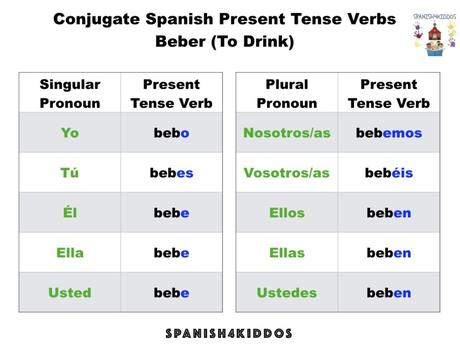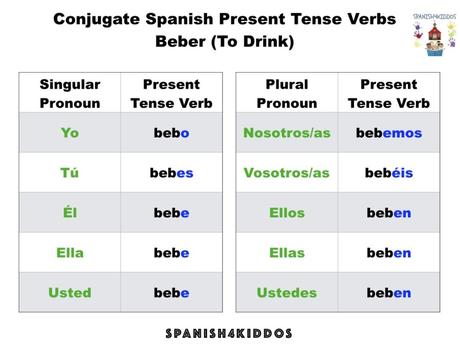Spanish verb conjugation is challenging to learn. Probably one of the most challenging aspects of learning Spanish is trying to memorize which subject-verb agreement go together. Much like English, studying verbs is the perfect time to master the language.
Actions are what motivates you to communicate and interact with one another. Especially with a foreign language, you want to master the essential components. In that way, you will be able to understand what you're saying. However, for many students, learning Spanish verbs is a difficult task. With so many complicated rules, learning Spanish verb conjugation takes a system of organization and dedication.
Three Ways to Apply Spanish Verb Conjugation Using -er Regular Tense
While there are many ways you can use to learn Spanish verb conjugation, students learn best when they engage with their learning. For instance, young children will learn best when they can apply prior knowledge with new terms. In the same way, older students would prefer to learn when interacting in small group activities.
Interactive Notebook
In learning Spanish verb conjugation with interactive notebooks is a practical method. For example, students learn to use a systematic way to learn. You can use a verb conjugation chart on one side as part of note taking or memorization tool.
Then, you can use the other side of the page for an activity to engage in the learning. When you have a special needs or inclusion classroom, interactive notebooks are handy learning tools. Many students, including ELL learners, assimilate their knowledge by using interactive notebooks.
They can observe the connections between verb conjugation and sentence structure. Perhaps, you have seen students struggle with verb conjugation and get frustrated with memorization of rules. That might not be the case when using interactive notebooks.
Since each student, regardless of age, can use a notebook, they are more apt to go back to use it. Similarly, when using a textbook or grammar book, implementing interactive notebooks as learning devices create a consistent method of learning. Each time you point out a verb conjugation or grammar skill from the interactive notebook, students will interact with the material they are learning.
Spanish verb chart
Learning Spanish verb conjugation without charts or tables is like driving without directions. You need a road map to guide you in your learning of Spanish. Think about how many times students stumble if they have the correct pronoun with the correct stem-changing verb?
They need a reference point to guide them when learning Spanish verbs. While your classroom walls are bare or may have one bulletin board, these areas in the classroom are excellent places to put anchor charts. These tools do not have to be fancy.
Use butcher paper or large size poster boards with laminated verb charts. In that way, every time students practice verb conjugation, you will have access to a visual tool. When conjugating the -er Spanish verb present tense, think about the subject-verb agreement. In that case, use a verb chart to help you go from singular to plural forms.
For instance, you can conjugate -er verbs as:
- Yo -o
- Tú -es
- Él/Ella/Usted -e
- Nosotros/as -emos
- Vosotros/as -éis
- Ellos/Ellas -en
- Ustedes -en


Cootie Catcher
Every student at any age has a natural deposition to play games. That is, they establish their learning when they interact with the material in different ways. Whether that learning is through interactive notebooks, computer software or group discussions, simple paper activities also support their education in the classroom.
One game students engage the most with is creating cootie catchers. For example, you can use cootie catchers to label the different pronouns and the stem-changing form of the -er verb. Once students get familiar with the verb conjugation, you can create a game between students to count and select a verb to conjugate.
Then, ask students to complete a set of sentences using the cootie catcher. Read more on how to make a cootie catcher in this post called How to Learn Spanish Verbs Using Cootie Catchers.
Regardless of which type of Spanish verb conjugation your class is learning, using different methods motivates students to grasp verbs to connect and make meaningful interpretations. Without context in learning, memorization leaves students empty in what they learn.
No matter how many times students practice with specialized software, interacting with others is worthwhile. As students learn more Spanish or ELL students assimilate in the classroom, associating with classmates and creating verb conjugation conversation generates meaningful learning.
Do you need support for Spanish learners or ELL students? Check out the Free Worksheets section or the printables in our shop.

